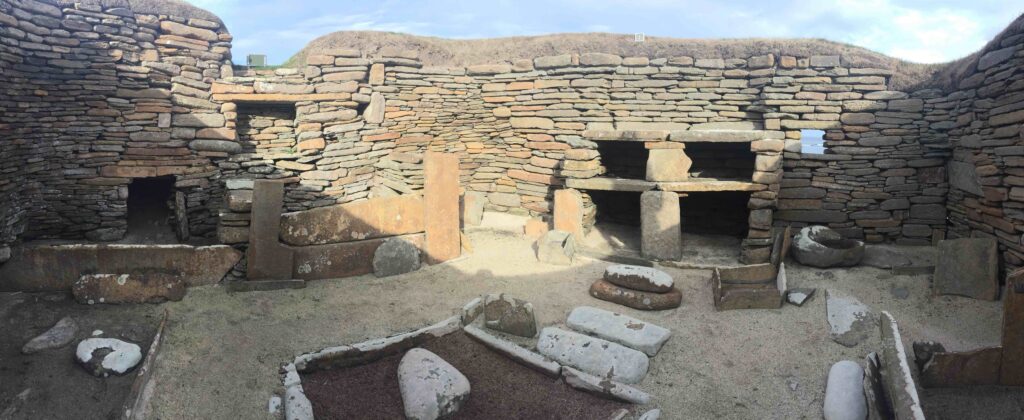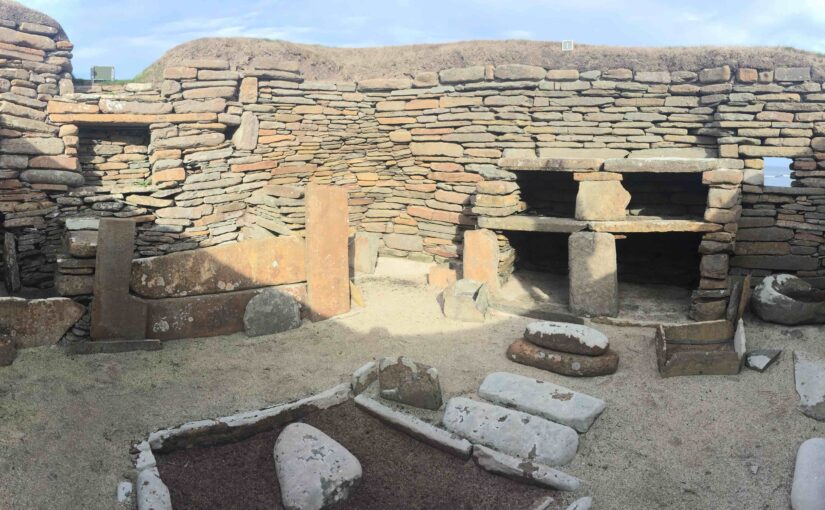Archaeologists like to pigeonhole things. It helps us to categorize and interpret the data we find. But life does not always conform to quite such clearly defined ways. We have to be careful that our organizational need for boundaries does not

obscure the narratives that we build about past lives. We also have to be careful that our own, twenty-first century, boundaries do not encroach on our interpretations of the past. (You might argue here that it is impossible to avoid personal bias; perhaps it is more accurate to say that we need to be aware of the ways in which our lived experience can skew our ideas about others, both those who live in other circumstances and those who lived in other times).
In my own experience, there is quite a strong divide between the domestic sphere of life and the spiritual side. While I don’t completely eschew the spiritual side at home, I tend to make use of specialised locations elsewhere in order to practice it. Thus, while I might ponder on the future of humanity while doing the washing up, or discuss the meaning of life after a leisurely meal, I would usually visit a church or other specialised location in order to celebrate a wedding, mark a funeral, or participate in ceremonial occasions. I do not have any particular fittings or furnishings at home to assist in ritual devotion, nor is there any particular corner of my house that is set aside for worship of any sort.
Of course, this does rather depend on your definition of devotion. I have a larder: could that be a space that is set aside for the celebration of food. I have a garage, though before you state the obvious, I would point out that I do not keep the car in it, it serves more as a repository for rubbish between my infrequent visits to the tip. The cat has its own special corner (which it ignores). In general, I think that my household, with its primarily secular design, reflects most households in the communities with which I am most familiar.
What I am trying to say is that in the society I know and love we have buildings for ‘living’ and we have buildings for spiritual devotion, and we keep the two sides of life very separate.
This is not so in all cultures, and it most certainly was not so everywhere in the past. It may not even have been common. Dwellings may well have included space, even furnishings, that was set aside for contemplation and worship. ‘Spiritual’ may well have been an integral part of ‘domestic’.
The Neolithic settlement site of Skara Brae in Orkney is known for the well-preserved suite of stone-built furniture to be seen inside the houses. A significant part of this lies in the shelved units that lie on the far side of the room from the entrance. These would have been prominent to those entering the space and in the nineteenth century they were ascribed the rather prosaic name, and use, of ‘dresser’. Today, many archaeologists would recognise the likelihood that they blended everyday storage and display with a deeper layer of meaning to include aspects of spirituality and ceremony. Yet, when asked to refer to them in a television documentary as ‘shrines’, I found that hard. The, to me, over interpretive nature of the term, felt wrong.
Whatever the nature of the Skara Brae furnishings, one mark of the successful archaeologist in the twenty-first century lies in their ability to eschew the rigid definitions of the past and embrace a more fluid world where all is not necessarily as it seems and boundaries are there to be challenged. Those who lived a strictly religious life still had to eat, prayer allowed those who built houses to assure a future.
Pigeonholes are useful – but should not become all-embracing. When we look at a space, we should try to blend the possibilities of interpretation.

You must be logged in to post a comment.